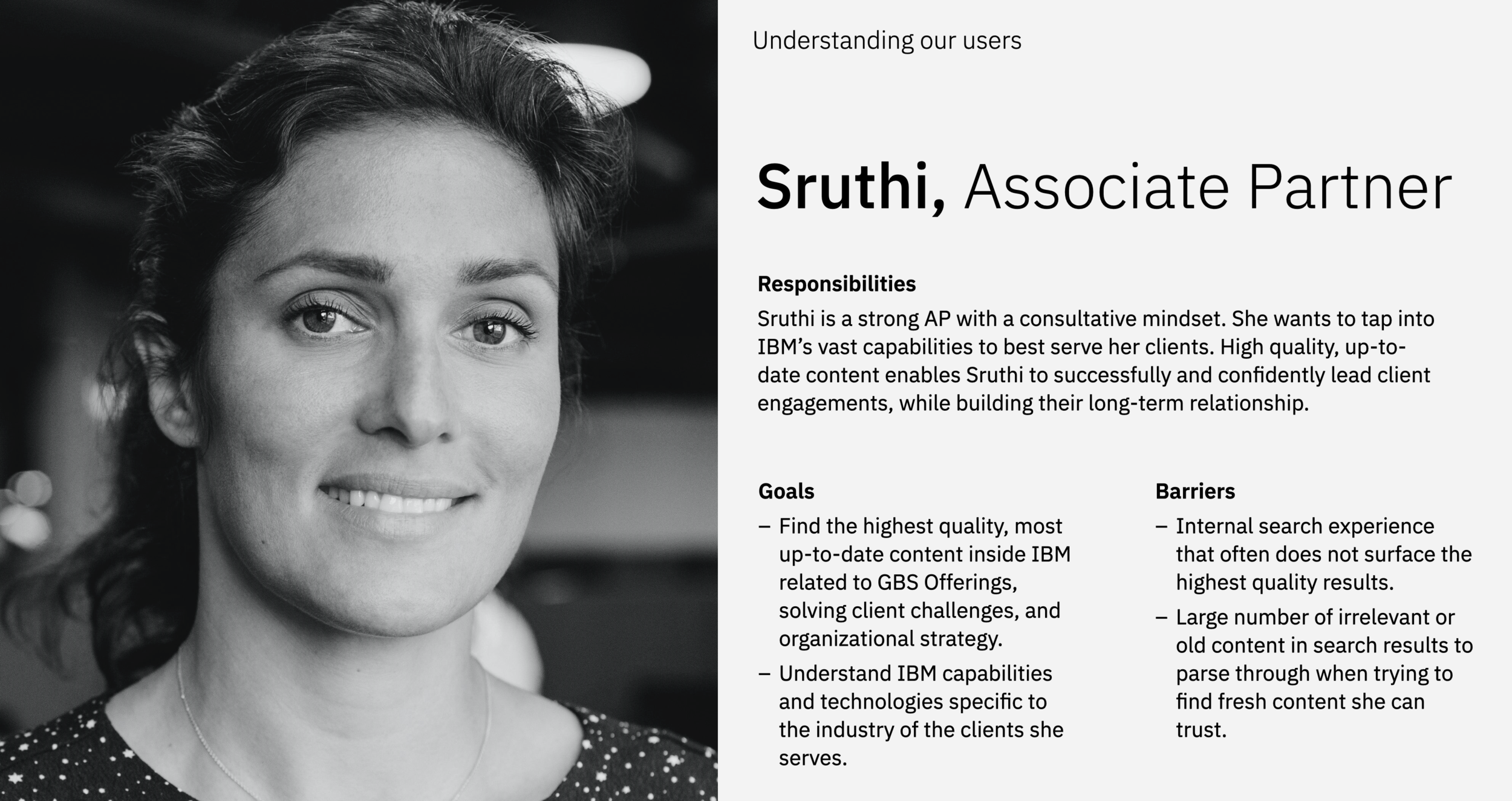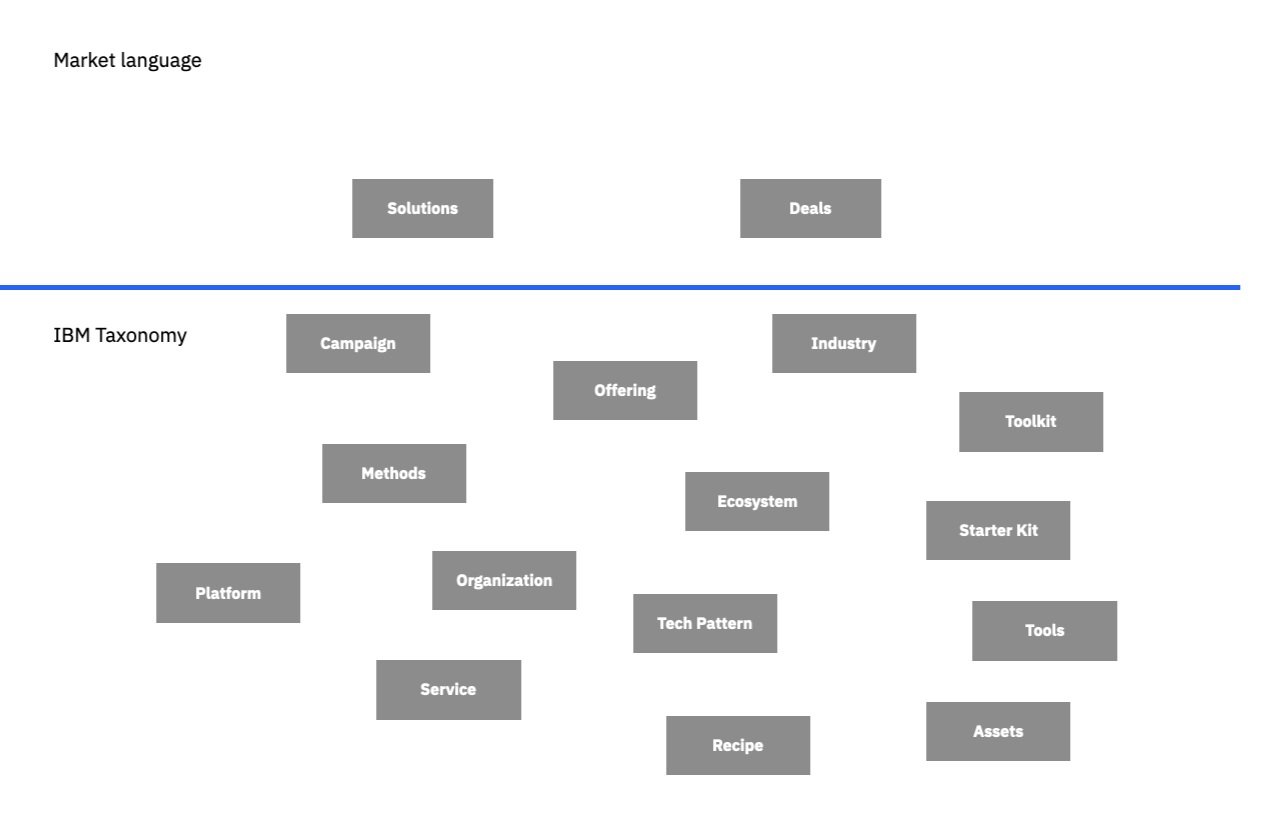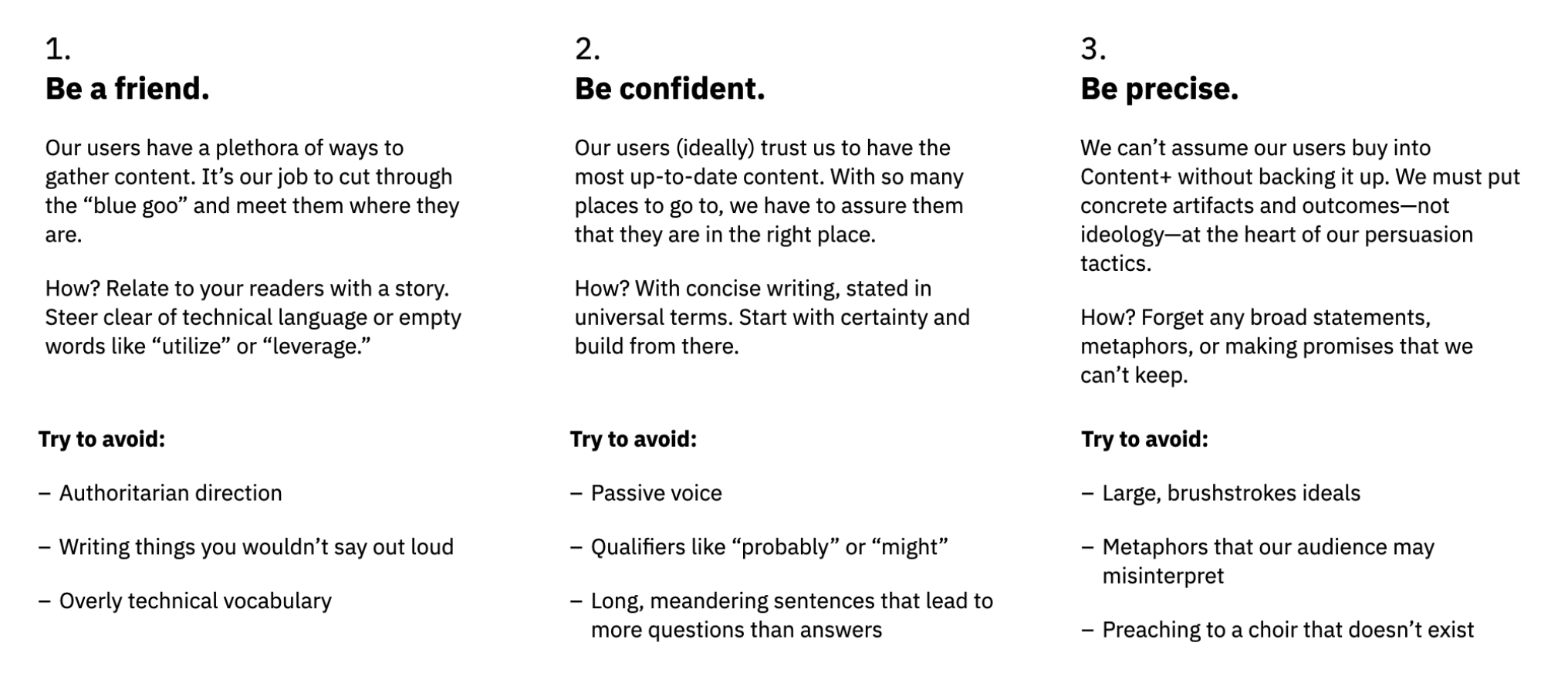A resource library that empowers, not hinders.
Arming sales execs with up-to-date material to add solutions to existing client contracts and score big deals with new ones.
Content+ is not a tool or a platform itself as much as it is an ecosystem of tools and platforms. Starting as a skunkworks project, our team evolved into a broader organization responsible for managing and maintaining various pathways to direct sellers to high-quality content. The goal was to create a single source of truth for sellers to find what they’re looking for–even when they don’t know where to begin. And so the Content+ home page was born.
Team
I worked as a full-time Content Designer within the consulting arm of IBM–Global Business Services–on a team of designers on a mission to empower sales teams and help them leverage IBM’s collective genius for our clients.
Key problem to solve
Associate Partners on the sales team are used to swinging from the hip. Talking to clients is what they do best, and they hate being bogged down by corporate language and requirements. Offering Leads depend on their sales teams to use their material because if they don’t read the fine print––and execute on it––IBM loses out on the cash flow.
Research
The “single source of truth” feels like a myth. There are actually nine other places on our intranet that tout that exact title. We pull users in through frontline searches into the world of Content+ to help them find the material they trust across various tools and platforms within a closed loop that always brings them back to us.
But IBMers still go to their network first to look for relevant material because they are constantly drowning in resources, workspaces, and corporate technobabble that leads them in the wrong direction.
When it came to testing, we wanted to focus on:
The language IBMers used every day to wheel and deal with clients.
Terms they did not understand in how IBM packages and sells their offerings and brings them to life with technology.
How they prioritize info when learning about a new offering to explain it to clients, colleagues, and integrate it into existing deals.
Getting started
Every study we ran reinforced a deeply set approach to sales that relies on an individual’s network––going to people first––because they don’t understand “IBM speak.” Associate Partners don’t understand how content and concepts relate to one another, and don’t know where to look for or find material that may be relevant. They don’t trust search bars anymore.
We had to ask ourselves: How might we build a reputable brand as the home for quality content while we also point out to so many other spaces?
Speaking the same language
We knew that our Associate Partners are used to thinking in broad stroke, market-oriented language. With 40% turnover, many run into walls when they try to understand the terminology in front of them and there’s not a lot of legacy perspective to help make heads or tails of it.
Testing existing language and taxonomy for organizing elements within an offering revealed that our sellers all had very different understandings of the anatomy of an offering.
It became clear that, in order to help our sales partners understand and use internal IBM strategy consistently, we needed to do some translation work for them. Not only did they sorely need a central source of truth to reference, but they also need needed a strong voice to cut through all the noise and help them translate internal strategy into client-centric language. You can always lead a horse to water. But we needed to make it really easy to drink.
Deliverables
First, I built a style guide for our team to keep producing content about IBM’s content. The intent of establishing the style guide was to provide a resource for all content creators, designers, and back-of-house content managers to write with the Content+ voice.
The guide included core principles and instructions on putting them into practice, from big-picture internal campaigns to headlines.
Putting principles into practice
The major plus of writing the rules is that you know them pretty well and can apply them when the occasion calls for it. Our POV as an internal brand is that we cut through the nonsense to help our sellers get what they need to do their jobs. That applies across the board, from big-picture strategies to headlines.
<— Content+ homepage experience
Drawing the line between stakeholder needs and user needs was crucial in redesigning our core experience, starting with the home page. We made space for the most common use case – reverse-engineering a solution based on a golden nugget from a prior client conversation. And also created an entryway into an index of Offerings, where sellers can learn about IBM Strategy in terms they understand.
<— Offering Profile redesign
This has also affected the Offering Profile, where users (sales teams) learn about a specific solution to bring to their clients. The original intent was to create a “snapshot” for sellers to include in decks with their teams because that’s what Offering Leaders expect them to be doing.
Upon further research, we learned that our partners often approach a new Offering in three steps, dictated by where they are in the sales journey. So, there are three main reasons users come here:
Learn about a new Offering
First, they need to understand the big picture. How much is it worth? What’s the time to value? Who can they target with this set of capabilities?Get talking points for client presentations
Then, they need to know how to position it with their client, and ideally have the option to tailor their solution to include other relevant offerings.Find resources to build a demo or execute
Finally, if the conversation goes well, they need an entry point to bring the solution to life with their delivery team, whether it’s to build out a demo to seal the deal or make their client's dreams come true.
Takeaway
Packaging resources for users is useless if they don’t understand their individual value. Context is everything when it comes to enablement.












